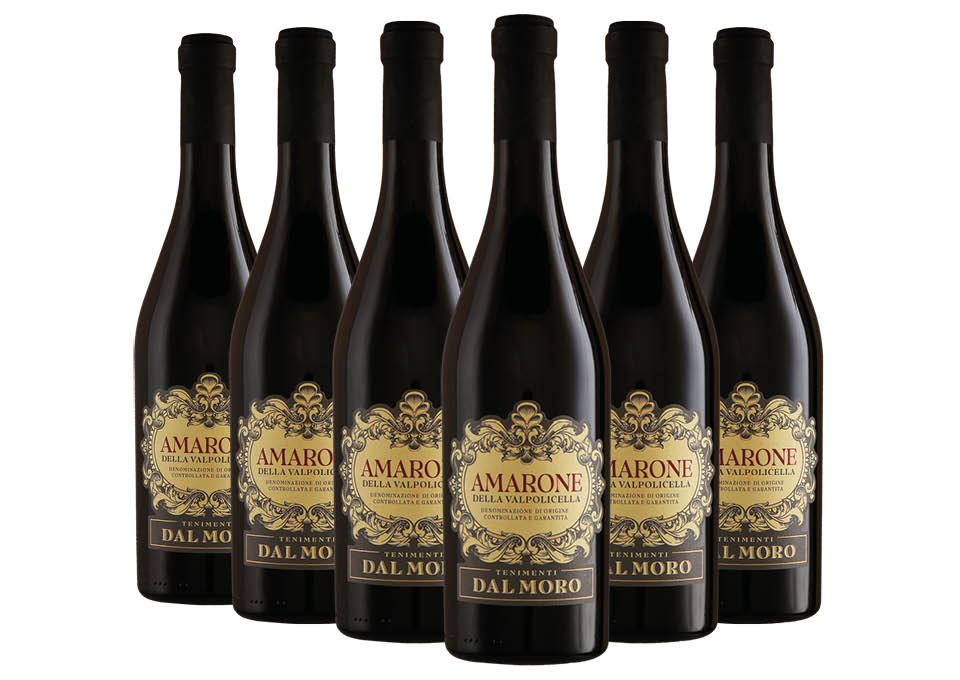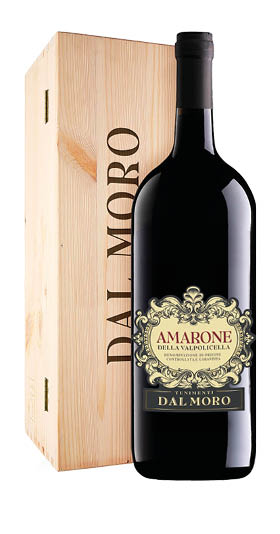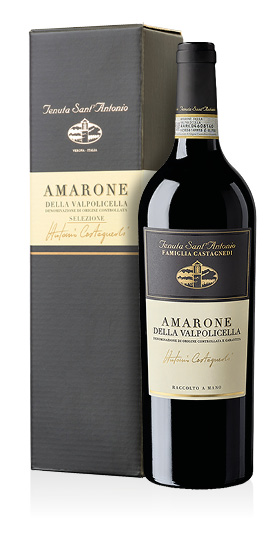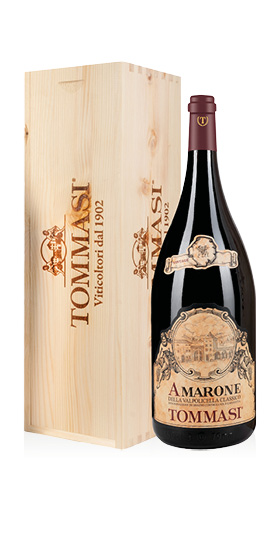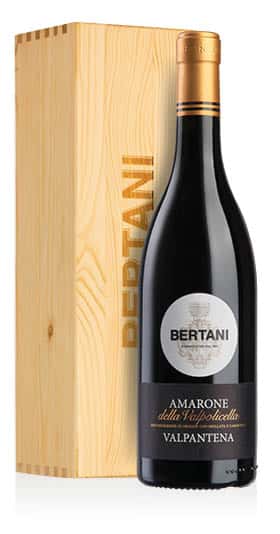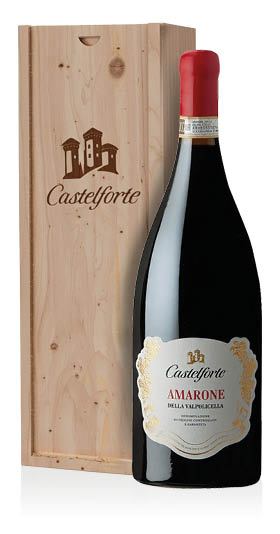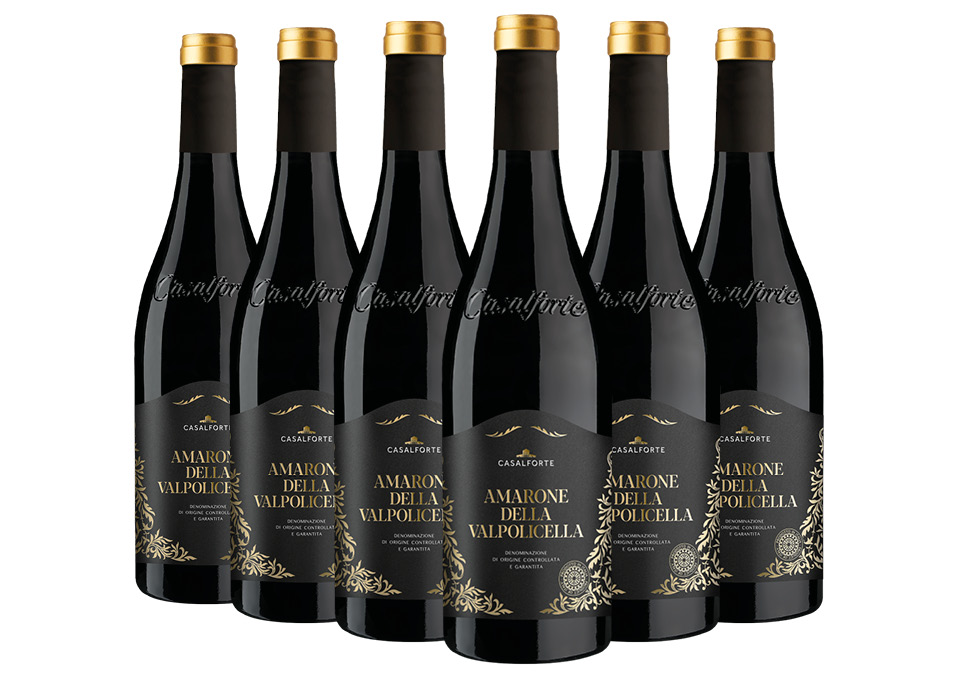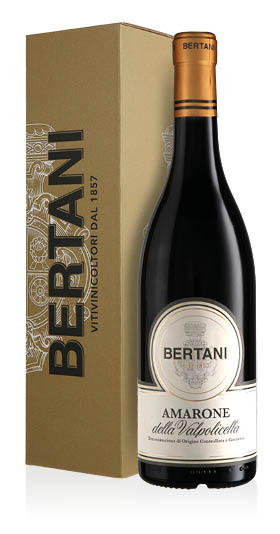Amarone Della Valpolicella
Amarone is the most prestigious red wine of Veneto, among the most loved and well-known in Italy, whose excellence is renowned all over the world. Amarone della Valpolicella is a red wine of great elegance and long ageing potential. The history of Amarone della Valpolicella begins with the oversight of a distracted cellarman who, forgetting about Recioto barrels, favored alcoholic fermentation. From a red wine that should have been sweet the result is a dry and basically bitter red wine. The production technique of Amarone is unique, because the grapes are harvested by hand and left to dry in boxes for over one hundred days and vinified in the winter. In this way an elegant wine is obtained, with concentrated aromas, with notes of wild berries and engaging hints of spices. The production area of Amarone della Valpolicella DOCG extends from the foothills of the province of Verona to Lake Garda, almost reaching the province of Vicenza. The spectacular landscapes on which the vineyards that contribute to the production of Amarone della Valpolicella are harmoniously distributed have a hilly conformation and the valleys blend harmoniously with the plain.
Where to buy Amarone?
If you are looking for a great Amarone, you are in the right place. On your online wine shop you can buy the best Amarone della Valpolicella DOCG labels at affordable prices, every day. Let yourself be tempted, explore the selection of our sommeliers and buy it now!
With what to combine Amarone?
Amarone della Valpolicella DOCG is a wine of great organoleptic opulence. Due to this characteristic of elegance, it goes perfectly with meat main courses such as stews, stews and game, but you can also combine it with aged cheeses. Amarone della Valpolicella is also known as a great meditation classic, to be tasted alone in your best moments!
What is the best Amarone?
Those looking for Amarone della Valpolicella, look for the best. On Vino.com you are spoiled for choice, and you can choose, also according to your personal taste. If you have traditional tastes, you will certainly not go wrong by choosing the historic Amarone Costasera from Cantina Masi, a reference point in the category. If you are looking for structure, softness and velvety tannins, Dal Moro Amarone della Valpolicella DOCG can only be the best choice. You just have to visit the selection and let yourself be enlightened in search of your best Amarone della Valpolicella!
What grapes is Amarone made from?
Amarone della Valpolicella DOCG is made from a blend of proudly native Veronese grapes. The production disciplinary in fact provides for the use of Corvina, Corvinone, Rondinella, and other local grapes, in a smaller percentage.


